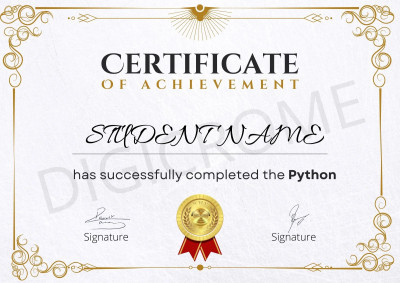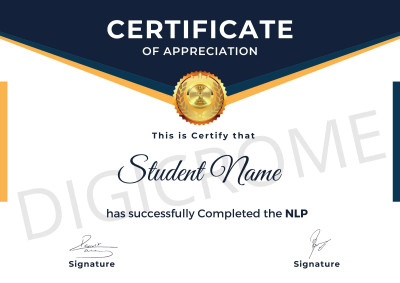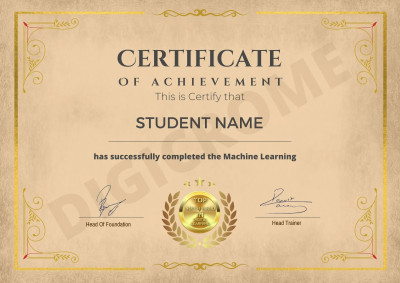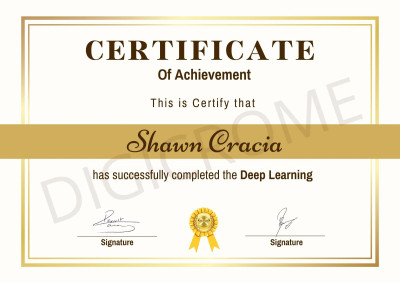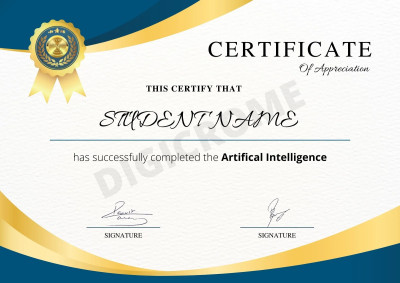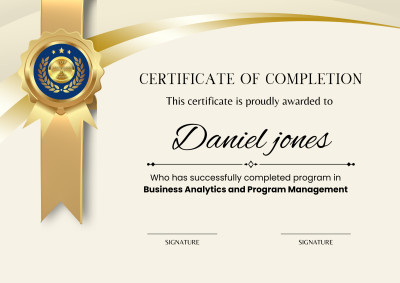Program Overview
Data science is a multidisciplinary field that focuses on studying and analyzing data to extract valuable insights and make informed decisions. It involves various processes such as data collection, cleaning, visualization, and statistical analysis to uncover patterns and trends within the data. Data scientists often use tools like Python and R for data manipulation and analysis.
Machine learning, on the other hand, is a subfield of artificial intelligence (AI) that focuses on developing algorithms and models that can learn from historical data and make predictions or decisions without being explicitly programmed. Machine learning techniques include supervised learning (classification and regression), unsupervised learning (clustering and dimensionality reduction), and reinforcement learning.
Don't miss the chance to join the ranks of professionals shaping the future with data. Invest in your education, and you'll unlock a world of opportunities in Data Science and Machine Learning. Enrol today to make your mark in this exciting and rapidly evolving field!
Are you ready to take the first step towards an exhilarating career in Data Science and Machine Learning? Join us and embark on this transformative journey today!
Machine Learning
- ₹30000.00
Features
- Live Online Program
- E-Learning Material
- Flexible Fee-Plan
- Industry Projects
Key Highlights
 Live Online Program
Live Online Program E-Learning Material
E-Learning Material Flexible Fee-Plan
Flexible Fee-Plan
 Industry Projects
Industry Projects
 Expert Experienced Trainers
Expert Experienced Trainers
 1:1 Doubt Session
1:1 Doubt Session
 Learning Management System
Learning Management System
 Live Projects
Live Projects
Program Objective
1. Anaconda
- About Anaconda
- Why use Anaconda?
1.1 Anaconda Installation.
- How to install it?
- Using Anaconda
- Environment Creating in Anaconda
- Activating Enviourment in Anaconda
- Deleting Environment
- Libraries Installing In Anaconda and more
1.2 Jupyter Notebook Introduction
- What is Jupyter Notebook
- Why use it
- Layout understanding of Jupyter
1.3 Jupyter Notebook Shortcuts and how to work with it.
- Launching Jupyter from Anaconda prompt
- Short Cuts
- Add deleting cells
- Markdown cell Tricks
- How to work fast in jupyter
1.4 Python Introduction
- History of python
- Why is Python king now
- why work on python for AI
2. Using the Python IDE Jupyter (integrated development environment)
2.1. Types of values (int,float,str,bool)
2.2. Argument Passing and what are variable
2.3. Variable creation
2.4. Type method
2.5. Length method
2.6. Input and Output
2.7. Print
3. Data Structure in Python
3.1. List
3.2. Tuple
3.3. Dictionary
3.4. Set
3.5. Operations on List
3.6. The del statement
4. Conditional Statement
4.1. if Statements
4.2. else Statements
4.3. elif Statements
4.4. break and continue Statements
4.5. pass Statements
5. Loops Statements
5.1. Range
5.2. For Loop
5.3. For loop with range function
5.4 While Loop
5.5. While Loop with IF Condition
6. Functions
6.1. Defining Functions
6.2. Default Argument Values
6.3. Arguments passing and return value
6.4. Positional-or-Keyword Arguments
6.5. Lambda Expressions
6.6. Mapping
6.7. Filter
7. Comprehensions
7.1. List Comprehensions
7.2. Nested List Comprehensions
7.3. Comprehensions with Dictionary
7.4. Comprehensions with if the condition
8. File Handling
8.1. Reading and Writing Files
8.2. Errors and Exceptions
8.3. Syntax Errors
8.4. Exceptions
8.5. Handling Exceptions
8.6. Raising Exceptions
8.7. Exception Chaining
9. Classes
9.1. What is class
9.2. What is Objects
9.3. Class Definition Syntax
9.4. Class Objects Creation
9.5. Inheritance
9.6. Multiple Inheritance
9.7. Other Oops Concept
9.8. Iterators
9.9. Generators
9.10. Generator Expressions
- Reading the Data
- Cleaning the Data
- Data Visualization in Python
- Summary statistics (mean, median, mode, variance, standard deviation)
- Seaborn
- Matplotlib
- Population VS sample
- Univariate and Multivariate statistics
- Types of variables – Categorical and Continuous
- Coefficient of correlations, Skewness and kurtosis
Stats - Part of Data Science/AI
- Stats roll in Data Science
- Population and sample
- Types of variables
- Central tendency
- Coefficient of variance
- Standard Deviation
- Variance
- Covariance
- Pearson Correlation
- Spearman correlation
- Skewness and Kurtosis
- Inferential statistics
- Normal distribution
- Mean mode median
- Test hypotheses
- Null Hypotheses
- Alternate Hypotheses
- Correlation matrix
- Central limit theorem
- Confidence interval
- T-test
- Type I and II errors
- ANOVA
- Range
- Binomial Distribution
- Black-Scholes model
- Boxplots
- Chebyshev's Theorem
- Chi-squared Distribution
- Chi-Squared table
- Cohen's kappa coefficient
- Combination
- Combination with replacement
- Comparing plots
- Continuous Uniform Distribution
- Cumulative Frequency
- Co-efficient of Variation
- Correlation Co-efficient
- Cumulative plots
- Poisson Distribution
- Frequency Distribution
- Histograms
- Kurtosis
- Normal Distribution
- Pie Chart
- Poisson Distribution
- Probability
- Probability Additive Theorem
- Probability Multiplicative Theorem
- Probability Bayes Theorem
- Probability Density Function
- Residual analysis
- Residual sum of squares
- Root Mean Square
- Scatterplots
- Skewness
- Standard Deviation
- Type I & II Error
- Z-Score
- MinMax Schaller
What is Machine Learning?
1. Supervised and Unsupervised
2. Classification
3. Regression
4. Clustering
5. Time Series
6. Advance Techniques in Machine Learning and More
- Introduction To Machine Learning
- Introduction To Regression
- Linear Regression- A Brief Introduction
- Gradient Decent
- Convergence Theory
- Polynomial Regression
- Metrics of Model performance
- How To Divide the Data For Training & Testing?
- Training & Testing Of Model
- MSE and RMSE
- Using R^2 to Check the Accuracy of Model
- Using the adjusted R^2 to compare the model with a different number of independent variables
- Feature selection
- Forward and backward selection
- Parameter tuning and Model Evaluation
- Data transformations and Normalization
- Log transformation of dependent and independent variables
- Dealing with categorical independent variables
- One hot encoding vs dummy variable
- Regulisation Technique
- L1 and L2 Lasso and Rigid
- Introduction To Logistic Regression
- The sigmoid function and odds ratio
- The concept of logit
- The failure of OLS in estimating parameters for a logistic regression
- Introduction to the concept of Maximum likelihood estimation
- Advantages of the maximum likelihood approach
- Case study on Linear & Logistic Regression
Introduction To Classification
Types of Classification
Binary classification vs Multi-class classification.
Logistic Regression
SVM Support Vector Machine
KNN K-Nearest Neighbour
Naive Bayes
Decision Tree
Introduction To Decision trees
Decision trees - nodes and splits
Working on the Decision tree algorithm.
Importance of Entropy and Gini index.
Manually calculating entropy using the Gini formula and working out how to split decision nodes
How To Evaluate Decision Tree models.
Accuracy metrics – precision, recall and confusion matrix
Interpretation for accuracy metric.
Building a robust decision tree model.
k-fold cross-validation.
CART - Extending decision trees to regressing problems.
Advantages of using CART.
The Bayes theorem.
Prior probability.
The Gaussian NAÏVE’S BAYES Classifier.
What are the Assumptions of the Naive Bayes Classifier?
Evaluating the model - Precision, Recall, Accuracy metrics
ROC Curve and AUC
Extending Bayesian Classification
Ensemble
- Bagging and Boosting
- Bagging VS Bosting
- Bagging
- RandomForest
- Regulization in Random Forest
- Voting Classifier
- Soft Voting and Hard Voting in Voting Classifier
- Boosting
- AdaBoost
- Gradient Boosting
- XGBoost Frame Work
- What is Unsupervised learning?
- The two major Unsupervised Learning problems - Dimensionality reduction and clustering.
- Clustering algorithms.
- The different approaches to clustering – Hierarchical and K means clustering.
- Hierarchical clustering - The concept of agglomerative and divisive clustering.
- Agglomerative Clustering – Working on the basic algorithms.
- Distance matrix - Interpreting dendrograms.
- Choosing the threshold to determine the optimum number of clusters.
- Case Study on Agglomerative clustering
- The K-means algorithm.
- Measures of distance – Euclidean, Manhattan and Minkowski distance.
- The concept of within-cluster sums of squares.
- Using the elbow plot to select an optimum number of clusters.
- Case study on k-means clustering.
- Comparison of k means and agglomerative approaches to clustering.
- Noise in the data and dimensional reduction.
- Capturing Variance - The concept of principal components.
- Assumptions in using PCA.
- The working of the PCA algorithm.
- Eigenvectors and orthogonality of principal components.
- What is the complexity curve?
- Advantages of using PCA.
- Build a model using Principal components and compare it with the normal model. What is the difference?
- Putting it all together.
- The relationship between unsupervised and supervised learning.
- Other algorithms of Clustering
- DB-SCAN
- Mean shift
- Case study on Dimensionality reduction followed by a supervised learning model.
- Case study on Clustering followed by classification model.
- The technique’s in Machine Learning
- PCA
- Dimension Reduction
- Scaling
- Z-score
- Standardization
- Min Max Scaler
- Normalization
- Normalization General Method
- Feature engineering
- Model Selection
- Preprocessing
- What are NULL
- Handling NULL
- Handling Categorical Values
- Encoding
- What are Encoding Techniques
- Encoding for Nominal and Ordinal Data
- Encoding by Pandas
- Encoding by Other Lib
- Encoding by Mapping and core Python
Hyper Tuning
- What is Hyper Tuning
- Cross-Validation
- Grid Search CV
- Random Search CV
- Introduction to Model Deployment
- Introduction to Flask in Python
- How to deploy Applications in Flask?
- Types of Model deployment
- What is Time Series?
- Regression vs Time Series
- Examples of Time Series data
- Trend, Seasonality, Noise and Stationarity
- Time Series Operations
- Detrending
- Successive Differences
- Moving Average and Smoothing
- The exponentially weighted forecasting model
- Lagging
- Correlation and Auto-correlation
- Holt-Winters Methods
- Single Exponential smoothing
- Holt’s linear trend method
- Holt’s Winter seasonal method
- ARIMA and SARIMA
Our Certificates
Certified by









